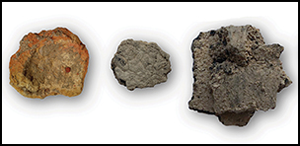Article contents
Early Neolithic salt production at Street House, Loftus, north-east England
Published online by Cambridge University Press: 31 March 2021
Abstract

Evidence for prehistoric salt production in Britain has been confined to the Bronze and Iron Ages. This article presents new evidence for Early Neolithic (3800–3700 BC) salt-working at Street House, Loftus, in north-east England. This deeply stratified coastal site has yielded the remains of a brine-storage pit and a saltern with at least three associated hearths, together with an assemblage of flint and stone tools, ceramic vessel sherds and briquetage. A process of production is suggested and parallels are drawn from contemporaneous European and later British sites. This discovery has the potential to influence future Neolithic studies considering subsistence, early technologies and exchange mechanisms.
- Type
- Research Article
- Information
- Copyright
- Copyright © The Author(s), 2021. Published by Cambridge University Press on behalf of Antiquity Publications Ltd.
References
- 12
- Cited by


